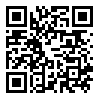BibTeX | RIS | EndNote | Medlars | ProCite | Reference Manager | RefWorks
Send citation to:
URL: http://eprj.ir/article-1-1063-en.html
2- University of Sistan and Balouchestan
This paper employs the "New Empirical Industrial Organization" approach, developed by Panzar-Rosse, which is used to measure the degree of competition and concentration for 23 industries with 2 Digit ISIC code during the period 1997 -2012. Panzar-Rosse model measures market power by studying how changes in factor input price is reflected in equilibrium revenue by firms, and market power is divided into three groups consisted of perfect competition, monopoly and monopolistic competition. According to the results, except five industries that have negative value of Panzar-Rosse and thus operate in state of monopoly market, other industries operate under conditions of monopolistic competition and in this group the estimated value of Panzar-Rosse for the three industries consist of "manufacture of publishing, printing and reproduction of recorded media", "manufacture of furniture" and "manufacture of medical, precision and optical instruments" is greater than 0.5 implying better condition of competition market. Analysis of Panzar-Rosse indicates that "manufacture of tobacco products" and "manufacture of medical, precision and optical instruments" amounts to -0.1790 and 0.8751, suggesting the highest and lowest concentrated market among other industries. The biggest relative output share, which amounts to 16.54 percent relates to "manufacture of motor vehicles" that operate in monopolistic market and in addition, based on high market power, this industry has the biggest relative value of sales equal to 32 percent among 23 industries.
JEL Classification: C33, L11, L60.
Received: Oct 06 2014 | Accepted: Jul 29 2017 | ePublished: Jul 29 2017
| Rights and permissions | |
.jpg) |
This work is licensed under a Creative Commons Attribution 4.0 International License. |







